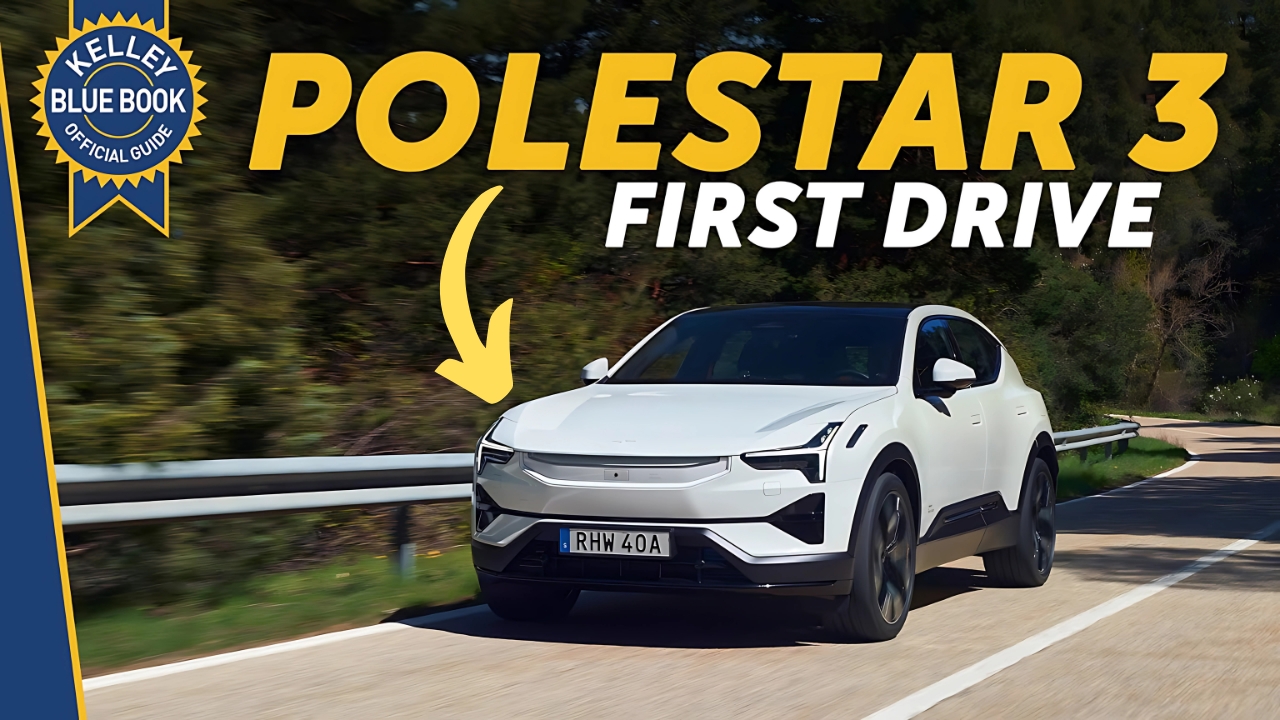The morning mist rises off the Yarra Valley as a sleek silhouette emerges from the fog. The 2025 Polestar 3 glides silently along winding roads, its distinctive Thor’s hammer headlights cutting through the haze.
This scene, increasingly common across Australian landscapes, represents something significant: the Swedish luxury EV maker’s proper arrival in a market historically skeptical of electric vehicles.
Design Evolution in Context
The Polestar 3 presents a distinctly Scandinavian interpretation of the luxury electric SUV. Unlike the aggressive, tech-brutalist approach of some competitors, the vehicle employs clean surfaces and precise detailing that feels particularly at home against Australia’s dramatic natural backdrops.
The minimalist exterior hides impressive aerodynamic efficiency – crucial for addressing range anxiety concerns that continue influencing Australian EV purchasing decisions.
For 2025, subtle refinements include a revised front fascia with slightly enlarged cooling ducts, addressing feedback from early production models operating in extreme heat.
New exterior color options include Sydney Harbour Blue and Uluru Bronze, developed specifically for the Australian market after customer feedback requested options reflecting the local landscape.
The distinctive illuminated Polestar emblem remains, though it’s now slightly smaller and positioned higher on the front boot panel. This change came directly from Australian design clinics where participants noted the original placement collected excessive dust and insects during country driving – the kind of practical feedback that demonstrates Polestar’s commitment to regional adaptation.
Powertrain Refinement
The dual-motor all-wheel-drive system receives meaningful updates for 2025, with total output increasing to 440kW and 900Nm through software optimization rather than hardware changes. This approach – improving performance through code rather than components – reflects Polestar’s philosophical commitment to sustainability by maximizing existing hardware capabilities.
Battery technology sees more substantial evolution, with the 111kWh pack now employing advanced cell chemistry that improves both charging speed and cycle durability – crucial considerations given Australia’s vast distances and extreme temperature variations. DC fast charging now supports up to 250kW, allowing 10-80% charging in approximately 28 minutes when connected to compatible infrastructure.
Real-world range, the persistent focus of Australian EV buyers, shows meaningful improvement. The WLTP rating increases to 645km, though owners report approximately 580km during typical mixed driving – still ample for intercity travel between Australia’s east coast charging networks.
Interior Environment
The cabin maintains Polestar’s commitment to sustainable luxury while incorporating subtle improvements based on owner feedback: Seating surfaces now feature a more breathable weave in the center sections, addressing complaints about perspiration during Australian summers. The wool blend material maintains its environmental credentials while improving comfort in extreme heat.
Climate control systems receive Australia-specific calibration, with more aggressive pre-conditioning capabilities that prepare the cabin quickly in extreme temperatures.
The heat pump system, essential for efficient winter operation, now works effectively in temperatures as low as -10°C – relevant for Tasmania and alpine regions during winter months.
The minimalist dashboard design continues Polestar’s distinctive approach, though the latest iteration incorporates more physical controls following user experience research that identified touchscreen fatigue among early adopters. These tactile elements prove particularly valuable during off-road driving where precise inputs matter.
Australian Market Context
Polestar’s positioning within Australia reflects nuanced understanding of the market’s complex relationship with electric vehicles: The simplified model range includes just three configurations rather than the complex option packages offered in European markets.
Australian specifications include standard features like the heat pump, panoramic roof, and 22-inch wheels – items that required additional investment elsewhere.
Pricing strategy acknowledges Australian luxury car tax thresholds while remaining competitive against established European competitors. The local team secured approval for market-specific service packages including five years of maintenance – addressing concerns about specialized EV service requirements in remote areas.
Most significantly, Polestar established charging partnerships beyond major cities, with destination chargers now appearing at wineries, luxury accommodations, and tourist destinations throughout Victoria and New South Wales. This approach recognizes Australian driving patterns extend well beyond urban environments.
Driving Experience
Behind the wheel, the Polestar 3 demonstrates sophisticated tuning appropriate for Australian conditions: The adaptive air suspension receives market-specific calibration addressing both urban speed humps and unmade road surfaces encountered during regional travel.
Wheel travel increases slightly compared to European specifications, while damping rates show more compliance at lower speeds.
The regenerative braking system offers multiple intensity levels, though Australian models add a new “gradient sensing” mode that automatically increases regeneration on downhill sections – particularly valuable in mountainous regions like the Adelaide Hills or Blue Mountains.
Steering weight and response demonstrate the Swedish manufacturer’s commitment to driver engagement rather than isolation. The system provides genuine feedback without artificial heaviness, creating confidence during high-speed country driving where crosswinds and varying surfaces require constant subtle corrections.
2025 Polestar 3
The 2025 Polestar 3 represents something more significant than another luxury EV entering the Australian market. Its thoughtful adaptation to local conditions, driving patterns, and customer preferences demonstrates genuine commitment beyond merely shipping European specifications to southern shores.
For Australian luxury buyers considering electric transition, the Polestar approach offers reassurance through its focus on regional suitability rather than technological showboating.
As infrastructure continues expanding beyond major population centers, vehicles designed with Australian conditions in mind will increasingly influence buying decisions.
The Polestar 3 may wear its Scandinavian design philosophy proudly, but its Australian execution shows sophisticated understanding of what matters in this unique market.
